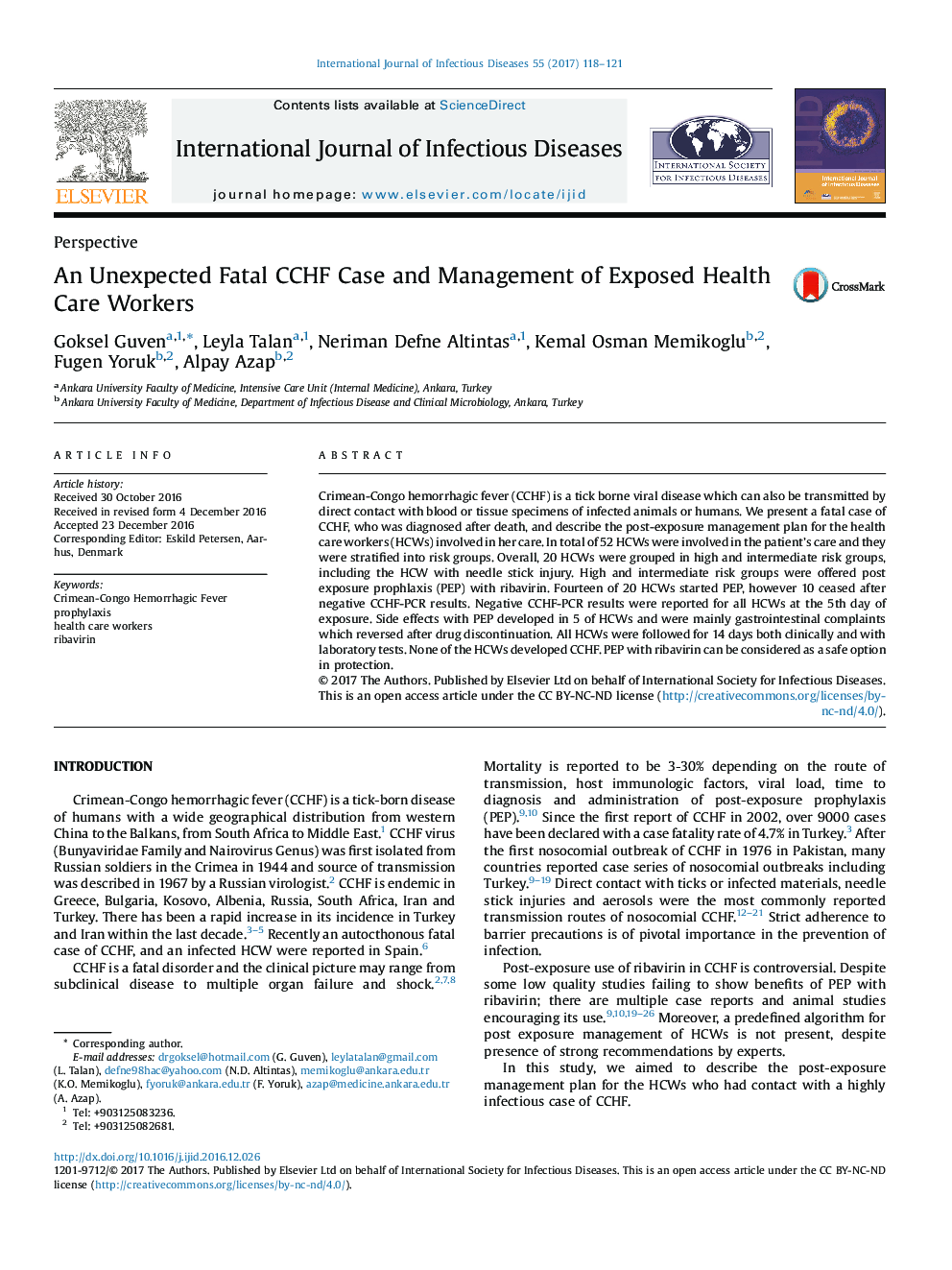| Article ID | Journal | Published Year | Pages | File Type |
|---|---|---|---|---|
| 5667351 | International Journal of Infectious Diseases | 2017 | 4 Pages |
â¢CCHF is a fatal disease and possesses a high risk for HCWs.â¢Post-exposure management plan should be developed for HCWs.â¢Ribavirin is a safe drug for post-exposure prophylaxis.
Crimean-Congo hemorrhagic fever (CCHF) is a tick borne viral disease which can also be transmitted by direct contact with blood or tissue specimens of infected animals or humans. We present a fatal case of CCHF, who was diagnosed after death, and describe the post-exposure management plan for the health care workers (HCWs) involved in her care. In total of 52 HCWs were involved in the patient's care and they were stratified into risk groups. Overall, 20 HCWs were grouped in high and intermediate risk groups, including the HCW with needle stick injury. High and intermediate risk groups were offered post exposure prophlaxis (PEP) with ribavirin. Fourteen of 20 HCWs started PEP, however 10 ceased after negative CCHF-PCR results. Negative CCHF-PCR results were reported for all HCWs at the 5th day of exposure. Side effects with PEP developed in 5 of HCWs and were mainly gastrointestinal complaints which reversed after drug discontinuation. All HCWs were followed for 14 days both clinically and with laboratory tests. None of the HCWs developed CCHF. PEP with ribavirin can be considered as a safe option in protection.
